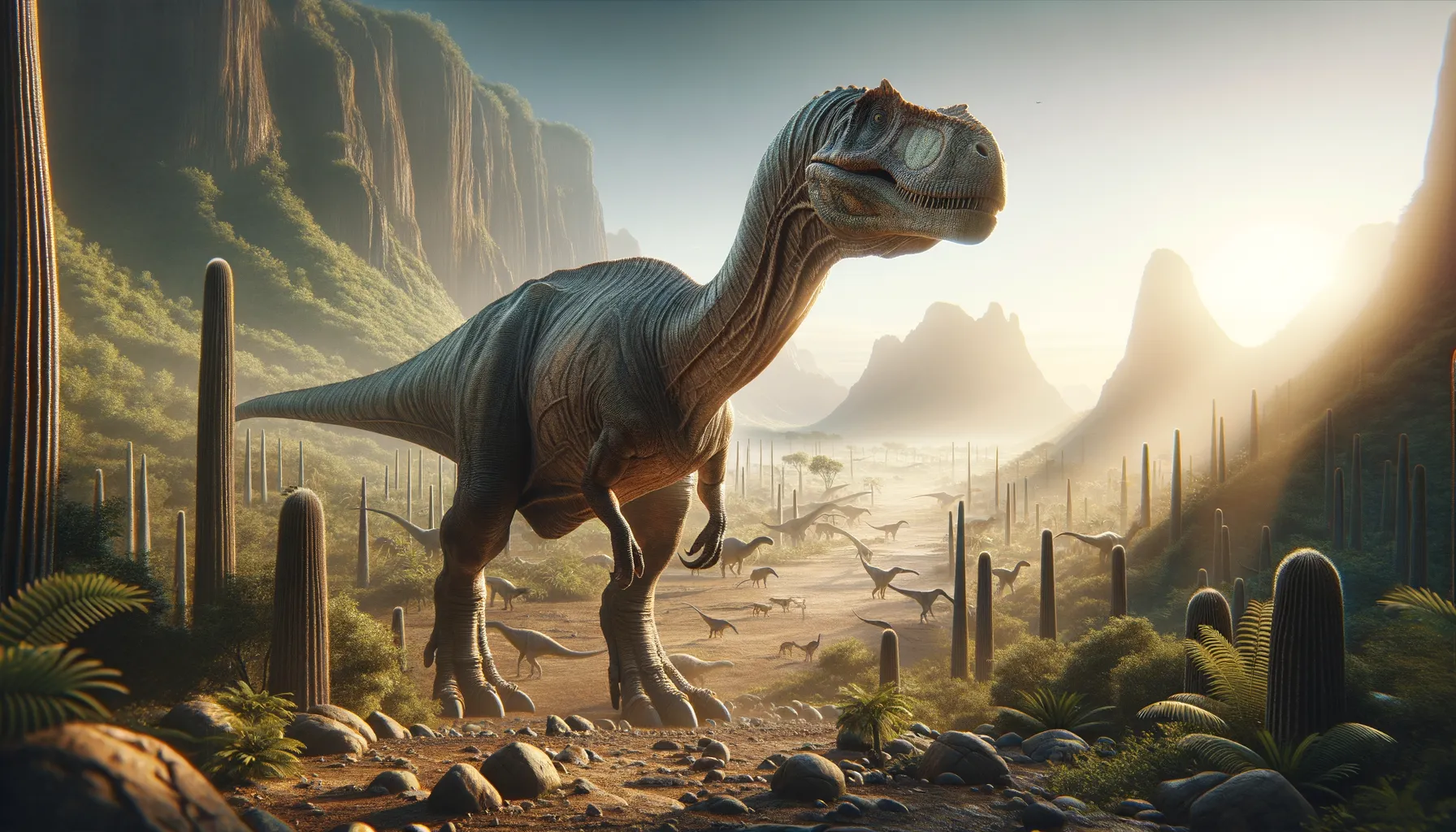
Camelotia
Unveiling the giant of early sauropods.
Period
Triassic
Length
Reached up to 10 meters in length.
Height
Stood around 3-4 meters tall.
Weight
Weighed approximately 10-15 tonnes.
Camelotia was a massive herbivorous dinosaur from the late Triassic period. It belonged to a group called sauropodomorphs, which were precursors to the giant, long-necked dinosaurs like Brachiosaurus. Fossils suggest it had a large body, long neck, and a bulky build. Its remains were primarily found in what is now England, providing insights into the diversity of early sauropodomorphs. Its discovery helped paleontologists understand the transition from small to large-bodied herbivorous dinosaurs.
Diet
Camelotia primarily fed on a variety of plants. Its long neck allowed it to reach vegetation that was otherwise inaccessible to shorter herbivores. Its diet provided the necessary energy for its large body size.
Hunting
Camelotia was not a predator, so it did not hunt. Instead, it foraged for food among low and high-growing plants. Its large size likely deterred smaller predators from attacking.
Environmental challenges
Living in the late Triassic, Camelotia faced a world undergoing significant climatic shifts. Periodic droughts and changing landscapes presented challenges in finding consistent food sources. The gradual transition of flora and fauna also required adaptability for survival. Competition for resources with other herbivores was a continuous challenge.
Speed
Likely slow-moving due to large size.
Lifespan
Estimated around 50-60 years.
First discovery
Discovered in 1985 in the UK.
Fun Facts
- Camelotia was named after Camelot, the legendary castle of King Arthur.
- It was a long-necked dinosaur belonging to a group known as sauropodomorphs, which includes many of the largest land animals to have ever lived.
- Camelotia fossils have been primarily discovered in England, specifically within the Bristol area.
- This dinosaur lived during the Late Triassic period, roughly 208 to 201 million years ago.
- Camelotia was primarily herbivorous, meaning it fed on plants.
- Despite its ties to medieval legends in name, Camelotia predated any human castles or kingdoms by millions of years.
Growth and Development
Camelotia likely hatched from eggs and experienced rapid growth during its juvenile stages. As a member of the sauropodomorphs, its growth patterns included significant lengthening of the neck and legs. It reached full size relatively quickly, which was essential for avoiding predators. Interaction with others of its kind may have encouraged social learning, facilitating survival strategies.
Habitat
Camelotia inhabited regions that provided ample vegetation, including forests and floodplains. Its large size required extensive feeding grounds, ideally with a variety of plant life. Water sources were crucial, as hydration would have been vital for maintaining its massive body size. Seasonal migration might have occurred to follow food availability across different terrains.
Interaction with other species
Camelotia likely coexisted with various Triassic herbivores and early predators. Its significant size might have made it less prone to attacks by land-based predators. However, it would have needed to compete with smaller herbivores for shared plant resources. Some collaboration or social interactions might have occurred within its species or with similar large herbivores.
Natural lifespan
Camelotia had a natural lifespan extending around 50-60 years.
Reproduction
Camelotia reproduced via laying eggs in nests. Nests were likely built in secluded, safer areas to protect from predators. Parenting behavior is unclear but may have involved guarding nests until hatching. Juveniles would have grouped together or stayed near adults for protection as they grew.
Social behaviour
Camelotia might have exhibited some forms of social behavior, including living in small groups. Group living could have offered protection against predators, particularly for juveniles. Communication through vocalizations or body language might have facilitated social interactions. Such behaviors would have aided in the coordination of group movements and feeding activities.
Fossil locations
Camelotia fossils were primarily discovered in England, notably the Upper Triassic strata. The initial bones found provided crucial insights into sauropodomorph evolution. These fossil sites continue to be significant for studying early herbivorous dinosaurs. Ongoing excavations in the area may yield further discoveries of Camelotia remains.
